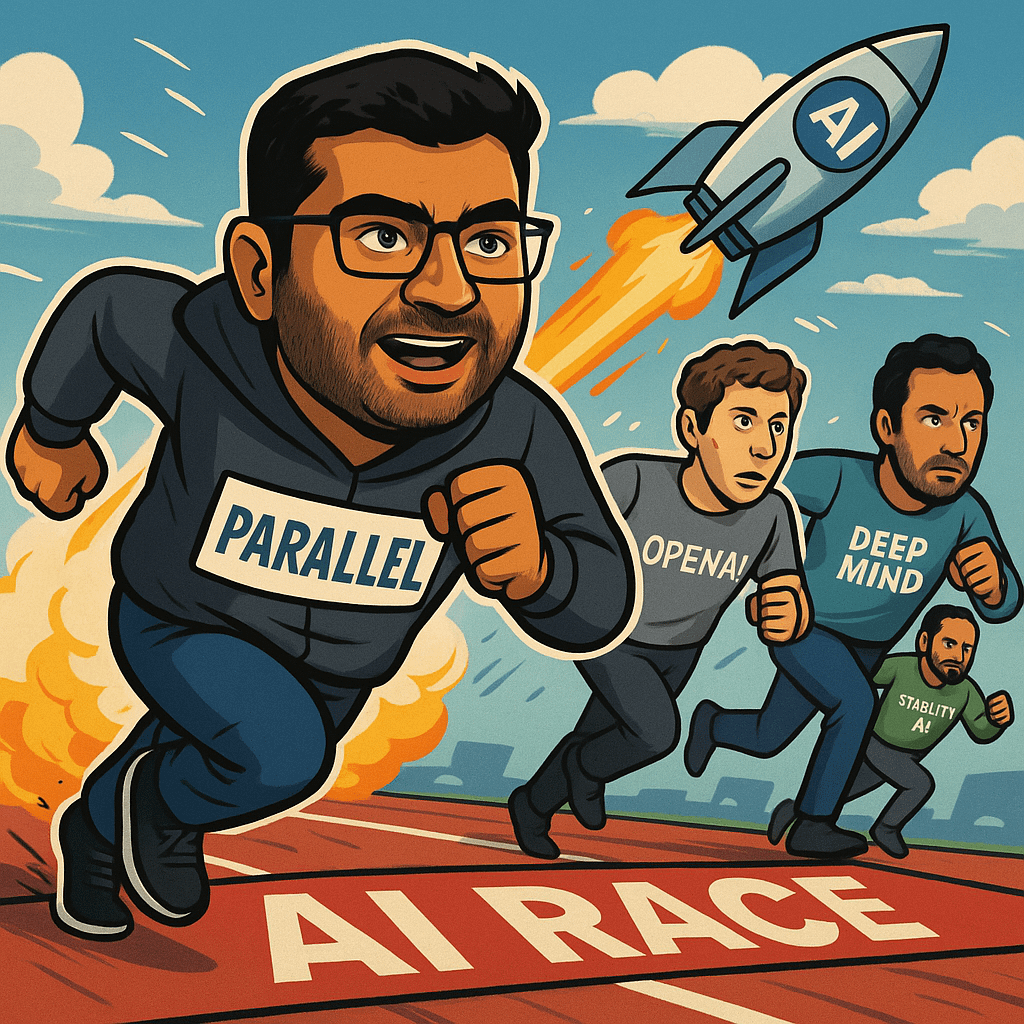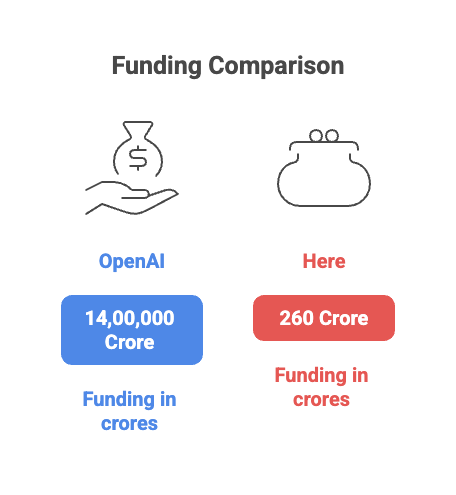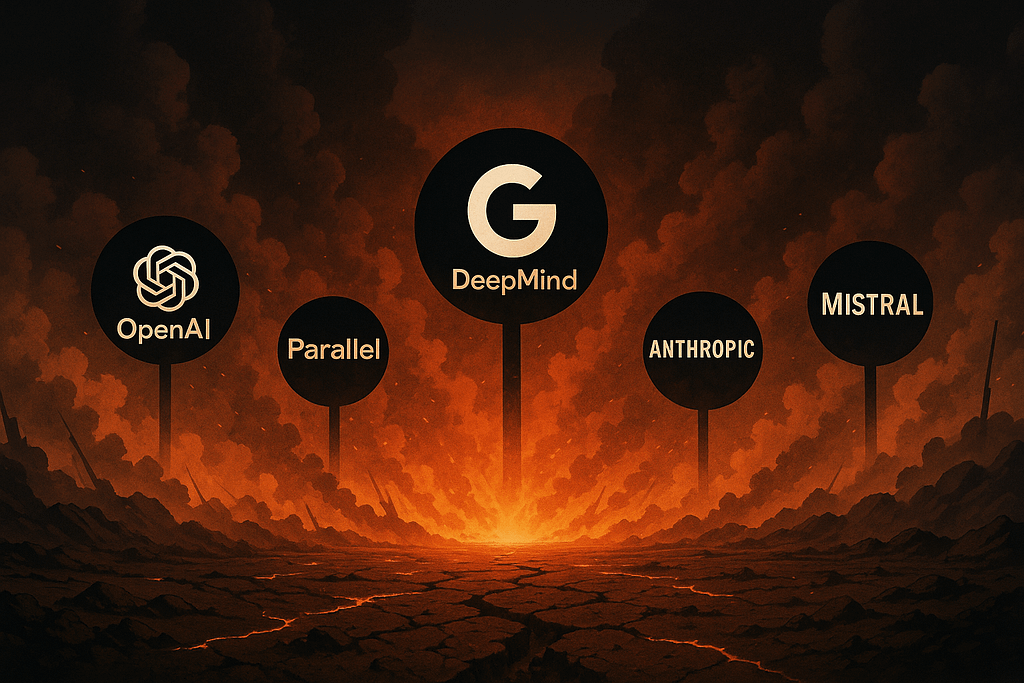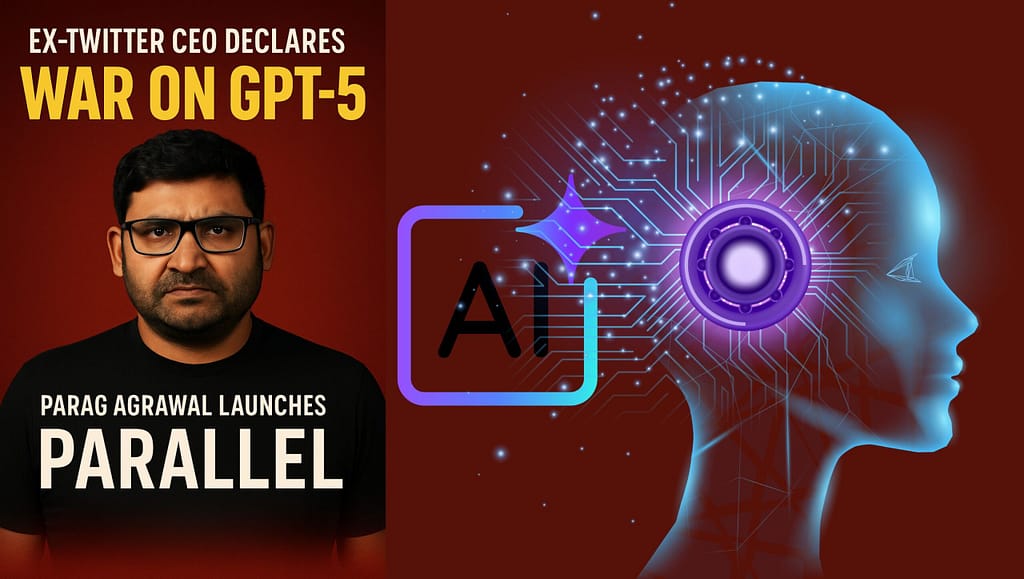Ex-Twitter CEO Parag Agrawal has launched a new AI startup called Parallel, claiming it’s 10% more accurate than GPT-5. Could this be the beginning of AI Wars 2.0?
In the world of artificial intelligence, every week seems to bring a new breakthrough. But sometimes, a headline is so bold it makes the entire industry stop and take notice.
That’s exactly what happened when Parag Agrawal, the former CEO of Twitter, announced the launch of his new AI startup Parallel with a shocking claim: his system is already 10% more accurate than GPT-5.
For context, GPT-5 is not just another AI tool it’s the crown jewel of OpenAI’s research. Years of effort, billions in funding, and some of the brightest AI minds on the planet have contributed to building this model.
So when Agrawal suggests that his relatively new company has created something that surpasses it, the industry is understandably buzzing with both excitement and skepticism.
Open AI Is Going to Eat Microsoft Alive
The Rise of Parallel
Agrawal, best known for his tenure at Twitter during one of its most turbulent times, has now turned his focus to artificial intelligence. With a fresh infusion of ₹260 crore (roughly $31 million USD) in funding, Parallel has entered the arena with a bold mission: to challenge OpenAI’s dominance in AI model development.

Unlike many AI startups that are building tools on top of existing large language models, Parallel is reportedly creating its own foundation model. If true, this makes them part of a very small, elite group of companies with ambitions to compete at the highest level of AI development—where only a handful of players like OpenAI, Anthropic, Google DeepMind, and Mistral currently operate.
Agrawal’s pitch is straightforward yet audacious: Parallel is not just another chatbot startup. It’s aiming to build an AI system that sets a new benchmark for accuracy and reliability.
Why Ex-Twitter CEO Claim Is So Bold
To understand the magnitude of Agrawal’s claim, we need to consider what it means to be “10% more accurate than GPT-5.”
- Benchmarking AI models is incredibly complex. Accuracy can mean many things factual correctness, coherence, reasoning ability, or even safety.
- GPT-5 is already state-of-the-art. OpenAI’s latest model is considered the gold standard in generative AI. Improving upon it, even slightly, would be a massive achievement.
- Resources vs. agility. OpenAI has billions in backing from Microsoft, a vast research team, and the infrastructure of Azure. Parallel, by comparison, is a lean startup. For it to outpace OpenAI so quickly would require either a groundbreaking innovation or an entirely different approach.
This is why Agrawal’s announcement feels less like a product launch and more like a declaration of war in the AI arms race.
What’s at Stake
The implications of Parallel’s success or failure go far beyond one company.
- For OpenAI: A credible competitor would force them to accelerate improvements, rethink pricing models, and possibly change how they roll out updates to users.
- For the AI industry: A startup challenging OpenAI signals that the barrier to entry for top-tier AI innovation may be lowering. More competition could mean faster innovation, better pricing, and more diverse approaches to AI safety and governance.
- For businesses and consumers: If Parallel really delivers a model superior to GPT-5, it could reshape how companies choose AI partners. Instead of defaulting to OpenAI or Anthropic, organizations might look to smaller players with more efficient, specialized solutions.
Simply put, this isn’t just about a new AI tool. It’s about who gets to own the future of intelligence.
Microsoft AI Gamble: Smartest Play or Tech Time Bomb?
The Skeptic’s View: Hype vs. Reality
As exciting as Agrawal’s claims are, there’s an equally valid reason to be skeptical.
- No benchmarks yet. So far, Parallel has not released any concrete data, peer-reviewed research, or third-party benchmarks to back up its claims.
- The AI hype cycle. We’ve seen bold promises before. Many AI startups have claimed revolutionary breakthroughs, only to fizzle out when their models failed to scale or meet real-world demands.
- Funding vs. results. Raising ₹260 crore is impressive, but building and training models that rival GPT-5 requires billions, not millions. Unless Parallel has discovered a radically new, cheaper way to train large models, the economics alone make the claim hard to believe.

In short, bold claims are easy. Proof is hard. Until Parallel releases real-world results, this is still speculation.
Why Agrawal’s Move Still Matters
Even if Parallel’s “10% more accurate” claim turns out to be overblown, the move itself has already shaken Silicon Valley.
- Surprise factor: Few expected Agrawal to return with an AI play, let alone one this ambitious.
- Talent magnet: Bold visions attract top researchers. If Parallel can recruit the right talent, its long-term chances improve dramatically.
- Narrative power: In AI, perception often precedes adoption. By positioning Parallel as the first true challenger to GPT-5, Agrawal has already secured a spot in the conversation.
This is how disruption starts not by being quietly better, but by making the industry question its assumptions.
The Beginning of AI Wars 2.0?
If Parallel delivers, even partially, it could signal the start of AI Wars 2.0. The first AI war was about who could build the biggest and most powerful foundation models—OpenAI, Google, Anthropic, and Meta all sprinted toward bigger training runs and more parameters.

The second war could be about efficiency, accuracy, and specialization. Instead of just being “bigger,” the winning models may be those that can prove real-world reliability, reasoning accuracy, and cost-effectiveness.
In that context, Parallel doesn’t have to fully dethrone GPT-5 to be impactful. Even proving that a startup can compete with OpenAI would be a paradigm shift.
Final Thoughts
Parag Agrawal’s announcement has electrified the AI industry. A startup led by the former Twitter CEO, claiming to be more accurate than GPT-5, is the kind of story that makes headlines and attracts scrutiny in equal measure.
Whether Parallel is the real deal or just another overhyped AI project will depend on what happens next. Benchmarks, adoption, and scalability will tell the true story.
But one thing is certain: the AI race just got a lot more interesting.
🔥 Question for Readers: Do you think Agrawal’s startup Parallel has a real shot at dethroning GPT-5, or is this just another ambitious claim that will fade away? Share your thoughts in the comments.
FAQs
Parag Agrawal AI
Q1: Who is Parag Agrawal in the AI world?
Parag Agrawal, former CEO of Twitter, has now entered the AI space by launching his startup, Parallel AI, which aims to compete with OpenAI and other AI giants.
Q2: Why is Parag Agrawal building an AI company?
After leaving Twitter, Agrawal is focusing on AI innovation, positioning himself as a leader in building the next generation of models that could potentially challenge GPT-5.
Q3: What makes Parag Agrawal’s AI project unique?
Agrawal claims his system is 10% more accurate than GPT-5, making it one of the boldest claims in the AI industry today.
Parallel AI Startup
Q1: What is the Parallel AI startup?
Parallel is a new AI startup founded by Parag Agrawal, designed to develop foundation models that could rival OpenAI’s GPT-5.
Q2: How much funding has Parallel AI raised?
The startup has raised ₹260 crore ($31M USD) to build and scale its foundation model.
Q3: How is Parallel AI different from other AI startups?
Unlike many startups building tools on top of OpenAI models, Parallel is working on creating its own foundation model, a rare move in the AI industry.
GPT-5 Competitor
Q1: Is Parallel AI a real GPT-5 competitor?
If Agrawal’s claims hold true, Parallel could become the first serious GPT-5 competitor, challenging OpenAI’s dominance.
Q2: How hard is it to compete with GPT-5?
Competing with GPT-5 is extremely difficult—it requires billions of dollars, advanced infrastructure, and cutting-edge research talent.
Q3: Are there other GPT-5 competitors?
Yes, companies like Anthropic, Google DeepMind, Mistral, and Meta are also developing large-scale AI models that could rival GPT-5.
AI Wars 2.0
Q1: What does AI Wars 2.0 mean?
AI Wars 2.0 refers to the next phase of competition among AI companies, shifting focus from bigger models to more accurate, efficient, and specialized models.
Q2: Who are the main players in AI Wars 2.0?
OpenAI, Anthropic, Google DeepMind, Meta, Mistral, and now Parallel AI are leading this battle.
Q3: Why is AI Wars 2.0 important?
It matters because it determines who will control the future of AI innovation, pricing, adoption, and safety standards globally.
OpenAI Challenger
Q1: Is Parallel AI a true OpenAI challenger?
Parallel positions itself as a direct OpenAI challenger by promising higher accuracy than GPT-5.
Q2: Have other startups challenged OpenAI before?
Yes, companies like Anthropic (Claude) and Mistral AI have already positioned themselves as alternatives, but none have claimed direct superiority over GPT-5 until now.
Q3: Why does the market need OpenAI challengers?
More competition drives innovation, lowers costs, and gives businesses more choices beyond OpenAI.
Future of AI Models
Q1: What does the future of AI models look like?
The future is shifting from massive, general-purpose models to smaller, more accurate, domain-specialized models.
Q2: Will AI models keep getting bigger?
Not necessarily—efficiency, reasoning accuracy, and cost-effectiveness will be more important than just scale.
Q3: How will startups shape the future of AI models?
Startups like Parallel could bring fresh ideas, faster innovation, and challenge the monopoly of big tech in AI.







